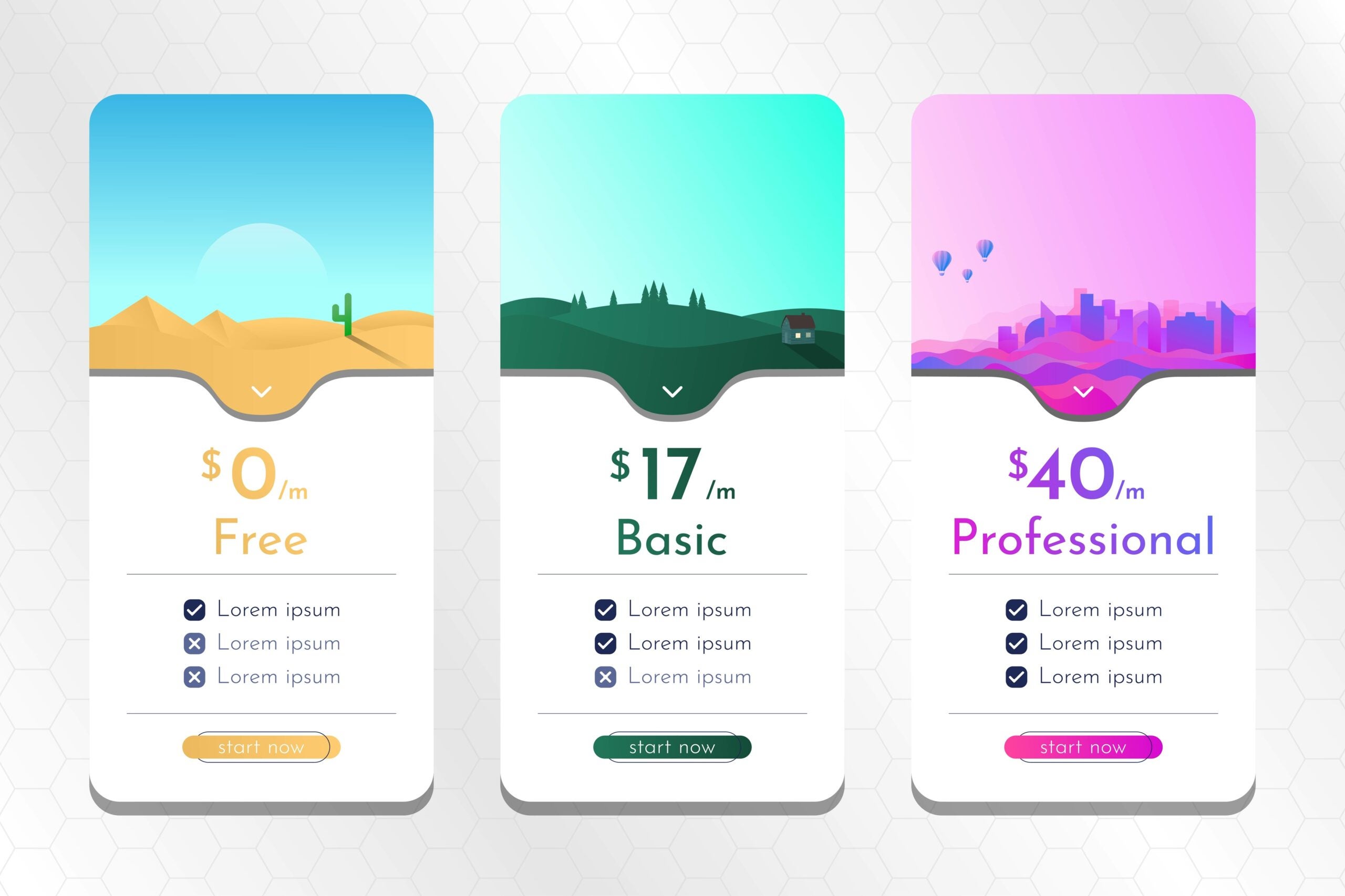
What if a simple change in pricing could unlock significant revenue growth for your small business? In this article, owners and founders share game-changing insights on implementing tiered pricing strategies. Learn how one business achieved a 35% revenue boost by introducing strategic tiers and how others maximized profits through thoughtful pricing structures. With 13 expert insights, you’ll gain practical strategies to reimagine your pricing approach and drive meaningful results for your business.
Introducing Tiered Pricing Boosted Revenue by 35%
When we first launched our surface restoration services, we offered a one-size-fits-all package. However, we quickly realized this approach wasn’t meeting the diverse needs of our clients.
We introduced a three-tier pricing model: Basic, Premium, and Platinum. The Basic tier covered essential surface cleaning and polishing, Premium added protective coatings, and Platinum included our full suite of restoration services with priority scheduling.
This tiered approach had a significant positive impact on our revenue. In the first year after implementation, we saw a 35% increase in overall sales. The tiered structure allowed us to capture a broader market share while also providing upsell opportunities.
One key lesson we learned was the importance of clear communication. We made sure to outline the specific benefits of each tier, helping clients understand the value proposition. This clarity was crucial in guiding customers to choose the tier that best suited their needs.
Another important factor was flexibility. We allowed clients to easily upgrade their service tier, even mid-project. This flexibility not only increased customer satisfaction but also boosted our average transaction value.
However, business leaders should be aware that implementing a tiered pricing model requires careful planning and ongoing management. It’s essential to regularly review and adjust your tiers based on customer feedback and market trends.
Tiered pricing isn’t just about offering different price points—it’s about creating value at each level that resonates with your target market.
We’ve found that tiered pricing has been a game-changer for our business model. It’s allowed us to serve a wider range of clients while maximizing our revenue potential. But remember, the key to success lies in understanding your market, communicating clearly, and remaining flexible to meet evolving customer needs.
Dana Thurmond, Owner, Surface Kingz
Tiered Pricing Captured More Market Share
What I’ve learned from running a property management company is that tiered pricing can be a game-changer, especially when it comes to catering to a range of clients with different needs and budgets. Introducing tiered pricing allowed us to capture more market share and increase our revenue by offering options that suited different types of property owners and landlords.
For instance, when I introduced tiered pricing into our property management services for the first time, I had three layers: one basic package that contained a skeleton of services, one standard that contained some value-added services like routine maintenance, and one premium, which would offer full-service management, anything from finding the tenants to 24/7 emergency maintenance. That way, we could reach not only budget-minded property owners but also those wanting an easy-going, complete service.
The result was a clear increase in revenues, while attracting more clients at various price levels. Some clients who were in doubt concerning our services because of their budget decided to choose the basic package, while other clients with large portfolios or who wanted a simple experience chose the premium package. Due to this, we witnessed an increase in the average money earned from one client and also widened our circle of clients.
One thing I learned from this experience is that clarity is key when it comes to tiered pricing. You need to explain the benefits and features of each package so clients can understand what they get at any given price. You also have to be sure the pricing seems fair and reflects your value. Making the tiers too complicated or pricing them too high can confuse potential clients or make them feel like they are paying too much.
Another advice is also to watch what clients will say and change tiers if needed. In our case, we realized some clients wanted more choices, so we later offered customizable add-ons—our clients could choose extra services depending on their needs.
In other words, it helped us serve varied clients even better, increased our earnings, and provided more leeway with property owners. The bottom line is to ensure that your pricing structure is transparent, offers good value at each level, and adjusts to feedback and market conditions accordingly.
Matthew Lang, Founder, LSK Property Management
Catering to Different Budgets Increased Revenue
Introducing tiered pricing significantly boosted our revenue by capturing a wider range of clients and maximizing value per client. The tiered model let us cater to different budgets without lowering prices across the board, ultimately increasing both volume and average spend.
For example, we designed three service tiers: an entry-level option for clients needing basic support, a mid-tier with added services, and a premium package offering complete, hands-on support. We saw many clients start with the entry-level plan and then upgrade as they realized the value of additional features. By clearly defining each tier’s benefits, we could upsell without pressure-clients naturally saw the value in moving up.
The key lesson here was to avoid arbitrary price hikes across tiers; each level had to genuinely reflect added value. Clear differentiation and genuine benefits for each tier made this model work well, driving consistent revenue growth without alienating clients.
Bassem Mostafa, Lead Market Analyst and Founder, Globemonitor Market Research Agency
Mid-Tier Became Popular, Boosting Revenue
In my experience, implementing tiered pricing significantly boosted revenue by increasing average transaction value and reducing customer churn. For example, we introduced a three-tiered pricing structure for consulting services. The base tier offered essential strategy sessions, the mid-tier added implementation support, and the premium tier included ongoing coaching and access to exclusive resources. The mid-tier became the most popular, with over 60% of clients opting for it, while the premium tier attracted high-value customers, who accounted for 25% of revenue in just six months.
The key to successful tiered pricing is designing tiers that clearly differentiate value while avoiding over-complication. Each tier should address specific customer needs and provide a logical progression of benefits. It’s also important to price each level strategically. The mid-tier should appear as the best value, as it often becomes the “anchor” for customer decisions.
Chris Percival, Founder & Managing Director, CJPI
Growth and Pro Options Boosted Revenue by 41.63%
In our company, rolling out our tiered pricing with Growth and Pro options gave our revenue quite a solid boost, going up about 41.63% in the first quarter alone.
Our Growth tier provides smaller teams with the essentials they need to drive sales without stretching their budgets, while our Pro tier is designed for larger teams who want the advantage of deeper AI insights and more automation. I have to say though, what really made this work was giving businesses the choice to pick the level that fit them best and then easily scale up as they grew—instead of locking them into a one-size-fits-all deal.
I also came to learn that each tier had to be valuable on its own-something users could stick with confidently without feeling like they were being nudged to upgrade. This built trust, and as teams grew or their needs evolved, they upgraded naturally.
For anyone looking to introduce tiered pricing, make sure each level genuinely meets a unique set of needs. Not only does this help with customer satisfaction, but it also encourages clients to move up when they’re ready, keeping the experience organic.
Frank Sondors, Founder, Salesforge AI
Tailored Packages Boosted Revenue Significantly
When I introduced tiered pricing at my firm, it transformed how we attracted and retained clients. Instead of offering a one-size-fits-all pricing model for legal services, we created tiered packages tailored to different client needs: basic, standard, and premium. For instance, in personal injury cases, clients on a budget could opt for our basic package, which covered essentials like case filing and documentation. In contrast, the premium tier offered end-to-end case management with additional strategic consultation.
This model significantly boosted revenue by appealing to a broader audience. Clients appreciated the flexibility, knowing they could access quality legal services at a price point that suited them. One key insight I’d share is to ensure that every tier delivers clear, tangible value. Overpromising on lower tiers or undervaluing premium services can lead to dissatisfaction. Transparency in what each level includes is critical for building trust and ensuring long-term client relationships.
Kalim Khan, Co-founder & Senior Partner, Affinity Law
Tiered Pricing Increased Order Size and Revenue
I can speak from experience on how introducing tiered pricing positively impacted our revenue. When we first launched, we offered a single flat rate for our handwritten notes, but we soon realized that this model wasn’t capturing the full value of the diverse needs of our customers. By introducing tiered pricing, we were able to offer different levels of service—from basic handwritten notes to more premium options that included custom branding and high-end materials.
For example, one of our clients, a large real estate agency, opted for our higher-tier pricing package, which included personalized stationery and priority shipping. This not only increased their order size but also allowed us to upsell additional services, boosting overall revenue. In fact, tiered pricing opened up opportunities to cater to both smaller businesses and larger enterprises, creating more accessible options while still providing high-value services for those willing to pay more.
If you’re considering tiered pricing, my advice is to ensure the value at each tier is clear and tangible. Customers need to understand exactly what they’re getting at each level, and it’s important to maintain a consistent experience that aligns with their expectations. This approach can help you increase revenue without alienating any segment of your customer base.
Rick Elmore, CEO, Simply Noted
Diverse Packages Boosted Revenue by 25%
Tiered pricing allowed us to cater to diverse budgets while maximizing revenue. We offer packages like basic academic support, premium mentorship, and intensive Oxbridge prep, each designed for specific needs. For example, a family opted for our premium mentorship program, resulting in their child securing an Oxbridge admission. This model boosted our revenue by 25% and attracted a wider audience. The key is ensuring every tier provides clear, tangible value so clients feel confident investing in higher-priced options.
Tornike Asatiani, CEO, Edumentors
Tiered Pricing Diversified Revenue Streams
Introducing tiered pricing had a surprisingly big impact on how we generated revenue and served our clients. I remember one morning during a team huddle when the idea popped up over coffee. We realized our typical startup client needed flexibility—they weren’t one-size-fits-all solutions. This led us to craft a range of service packages that allowed startups at various growth stages to access our expertise, from bootstrapped newcomers to those a step away from serious funding rounds.
One client, a promising health tech startup, initially hesitated because they thought they couldn’t afford top-tier advice. With our tiered pricing model, they started with a basic package focused on essential pitch deck services. As they started seeing some wins and securing more funds, they opted for higher tiers that offered deeper strategic support and investor relations coaching. It was rewarding to watch them grow along with their engagement with us.
For others considering this approach, remember that success lies in understanding your client’s journey and adjusting your offerings to meet their evolving needs. Keep communication lines open so clients know when it might be time to scale up or down according to their resources and goals. Just like choosing between economy, business, and first class on a flight, the essence is ensuring each option is tailored to deliver valuable experiences in line with the resources at hand. Ultimately, tiered pricing not only diversified our revenue stream but deepened our relationships with clients, fostering mutual growth.
Niclas Schlopsna, Managing Consultant and CEO, spectup
Three Pricing Levels Optimized Income Streams
Introducing tiered pricing had a significant impact on our revenue, driving an increase by allowing us to serve different customer segments more effectively. For instance, when I introduced three pricing levels for our services, we noticed that our customer base began to self-select into tiers that suited their needs. This not only maximized our customer satisfaction but also optimized our income streams. Clients at higher tiers enjoyed premium services, which they were willing to invest more in, thus boosting our overall revenue.
It is essential to ensure that each tier provides clear value differences, as this helps in meeting diverse customer expectations and encourages upselling. It’s crucial to understand your audience and tailor the tiers to align with the varied demands within your customer base. In practice, this strategy helped us balance value and accessibility, leading to steady growth in both customer loyalty and profitability.
Valentin Radu, CEO & Founder, Blogger, Speaker, Podcaster, Omniconvert
Accessible Offerings Increased Revenue and Customer Base
Introducing tiered pricing had a transformative impact on our revenue by making our offerings accessible to a broader audience while upselling premium options to high-value customers. We implemented three pricing tiers—Basic, Standard, and Premium—for our SaaS product, each with incremental features and benefits.
For example, our Basic plan targeted budget-conscious small businesses, offering core features at an affordable price. The Standard plan, designed for growing teams, included advanced tools, while the Premium tier provided priority support and custom integrations. After launching the tiered model, our customer base grew by 30%, and our average revenue per user (ARPU) increased by 20% as many opted for higher-value plans.
The key to success was aligning each tier with specific customer needs and ensuring clear value differentiation. My advice? Test your tiers with focus groups before launch, avoid overcomplicating features, and ensure each level solves a distinct pain point. Done right, tiered pricing can boost revenue and customer satisfaction simultaneously.
Inge von Aulock, COO, Penfriend
Strategic Tiers Drove Revenue Increase
This year, we introduced tiered pricing. This taught me that success lies not in giving customers more options but in designing choices that subtly guide them to the right one. Too much freedom overwhelms people. The trick is to make every option feel intentional and aligned with their needs.
I saw this play out with a local fitness studio we worked with. They originally offered a flat membership fee, which left potential customers stuck in a binary “yes or no” decision. We introduced a tiered model: a basic plan for casual users, a mid-tier plan with added perks, and a premium plan featuring exclusive one-on-one coaching.
Here’s the twist: the mid-tier plan wasn’t just an option; it was the anchor. We designed it to look like the best value for the price by strategically placing it between two less attractive extremes. The result? Over 60% of new sign-ups chose the mid-tier option, driving a 25% revenue increase within months.
The key for small businesses isn’t offering tiers but crafting them with psychology in mind. Make each tier a clear step up, but let one option shine as the irresistible choice. People don’t just want options; they want the easy choice.
Nicholas Robb, Design agency for startups, Design Hero
Works Tier Proved Popular, Boosting Revenue
Introducing tiered pricing had a meaningful impact on our revenue strategy. By offering Basic, Works, and Enterprise plans, we were able to serve a wider range of customers while improving our average revenue per user (ARPU). The Works tier, designed to provide advanced features without the full investment of Enterprise, proved to be especially popular. Many users found it to be a balanced option and upgraded from Basic, contributing significantly to revenue growth.
A key takeaway from our experience is that clear communication is essential. Customers need to understand the specific benefits of each tier and how those align with their needs. It’s also important to equip your support team with detailed knowledge about each tier to address customer questions effectively. Over time, we’ve made adjustments based on customer feedback and usage patterns to ensure each tier remains valuable and relevant.
While tiered pricing requires planning and ongoing refinement, it can be a highly effective way to align your offerings with customer needs and grow revenue sustainably.
Henry Timmes, CEO, Campaign Cleaner
1096 Views












